All Global articles – Page 66
-
 White papers
White papersCross Asset Investment Strategy - November 2022
Tightening monetary policy and slowing economic growth lead us to keep a cautious stance on risk assets, in light of potential liquidity and refinancing issues, particularly in low quality credit. We prefer US IG (over HY) segments and selectively like EM hard currency debt.
-
 White papers
White papersHow do you compare to your peers on your ESG journey?
In late 2021, we conducted our Think EQuilibrium study of 700 institutional asset owners across more than 20 countries to gauge their beliefs and actions around ESG integration, climate risk, social investing and diversity, equity and inclusion (DE&I).
-
 White papers
White papersNot a Pivot
Inflation is resilient and rates keep rising. Our central Stagflation Shock scenario, with persistent inflation and slower growth, continues to play out, though there is mounting evidence inflation may be resistant to policy tightening. Smaller hikes would indicate success, not a pivot in central banks’ resolve.
-
 White papers
White papersNew reality for investors: 5 big trends changing markets
There’s a new reality taking shape in global markets.
-
 Research Report
Research ReportPolicy changes and emerging risks for companies and investors
Biodiversity is the new climate change, with policymakers attending the COP-15 UN Biodiversity Summit in December expected to seal a ground-breaking agreement to protect nature. This new Paris-style global accord should accelerate efforts to tackle the biodiversity crisis and align finance flows and investment portfolios with nature-positive objectives.
-
 Research Report
Research ReportHow to account for nature’s role in the economy
In prioritising economic development, humanity has caused considerable damage to the natural world and its ecosystems. Yet a degraded biosphere will have a direct impact on growth and human welfare over the next several decades.
-
 White papers
White papersAfter a Terrible Year for Markets, What’s Not Priced In?
It’s more or less clear where investors think the world is headed, but they are surely missing something.
-
 White papers
White papersDespite headwinds, ESG continues to perform
The latest research from the Global Equities team at Federated Hermes indicates that despite market volatility and the energy crunch, ESG continues to be an effective performance indicator. Our previous research confirmed the link between social and governance factors . In the latest findings, the importance of environmental metrics is evidenced, with the best placed companies performing ahead or in line with peers, while poorly ranked companies tend to significantly underperform.
-
 White papers
White papersBlue Economy: Because protecting our planet requires a sea change
The decision by the United Nations to dedicate the decade 2021-2030 to protecting the oceans reflects an unavoidable reality: that ocean and maritime pollution is a top priority challenge from an environmental, social and economic point of view.
-
 White papers
White papersRecession watch: triggers, outlook and what next for central banks
While recession risk is clearly elevated around the world, they are notoriously hard to predict with any accuracy, in terms of timing, duration or impact.
-

-
 White papers
White papersFour reasons why social investing will be a driver of long-term sustainability
When it comes to environmental, social and governance (ESG) investing, the spotlight has historically shone brightest on the ‘E’ – especially in recent years as attention has intensified on the climate emergency.
-
 White papers
White papersGlobal Investment Views - November 2022
Central banks (CBs) are trying to work out how far they should go in terms of their aggressive tightening talk. We see four main factors to consider when assessing whether we will see pivots from CBs: (1) The still strong job market does not support a shift in stance from the Fed.
-
 White papers
White papersNot in Kansas Anymore
Investors navigating daily market volatility must come to terms with rising risks that we are entering a very different world.
-
 White papers
White papersWhy the Climate Transition Will Reshape the Global Economy: In Graphs
Climate change is one of the greatest risks of our time—and tackling it will likely drive a number of shifts across the world that investors need to understand.
-
 White papers
White papersHow the Robot Revolution Will Supercharge Productivity (Part I)
What will happen to human roles and employment in this automated future? Which countries or industries will benefit the most?
-
 Podcast
PodcastThe Investment Podcast: Time to allocate to mispriced consumer finance opportunities?
Imagine a new global financial crisis (GFC) materialising every year from here. The market seems focused on the fact that it will get tougher for consumers, and is in some cases pricing in default rates equivalent to GFC levels of stress, for years to come.
-
 White papers
White papersHigher Prices Haven’t Spooked U.S. Consumers Yet
Solid U.S. retail sales and better-than-feared Q3 earnings suggest slowing but still-resilient consumer spending, which should support core inflation and keep the Fed on a hawkish path. Notable U.K. leadership changes gave markets a reprieve, though policy direction is uncertain.
-
 White papers
White papersIf Tom Hanks in “Cast Away” had the new iPhone
As demand for connectivity rises across the globe, we believe an increasing range of options for satellite communication will emerge.
-
 White papers
White papersSchooling the Sovereigns
Bond markets appear to be disciplining policy inconsistencies, both within sovereigns and among them.


